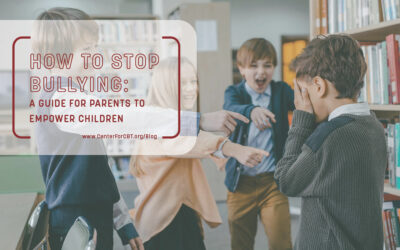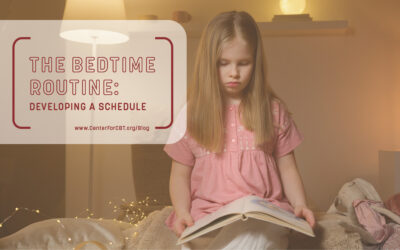At this point in time the world feels more strained than it’s ever been, and when we feel like we’re being pulled every which way it can be very challenging to shift gears and focus on something positive. We tend to succumb to negativity bias, and when we’re spiraling down through a series of what-ifs and I-can’t-believes, it begins to feel more and more difficult to think of the things that bring us joy. When we fall into this pattern it has detrimental effects on our relationships, self-esteem, mental fortitude, and even our physical health, all of which contribute to a drastic decline in happiness and satisfaction with one’s life.
Of particular importance is that gratitude is not just beneficial to the person practicing it, but to everyone around that person. The positivity you garner from practicing gratitude has a tangential effect on the people you interact with, and modeling this practice is also helpful in teaching your children to be more grateful, ultimately leading to a happier, healthier home environment and family dynamic.
Often worldly stressors are not necessarily within our control, and although we cannot change those outside forces, we can counter them with internal strategies. Of all the virtues that correlate with happiness (i.e. kindness, prudence, self-control), the strength that has the most notable impact is gratitude. This skill has been shown to improve happiness in multiple realms of life, offering emotional, social, personality, career, and physical and mental health benefits.
Why Gratitude?
Practicing gratitude is more than just saying thanks, but showing thanks through active recognition, acknowledgement, and appreciation of the good things we have in life, both big and small. Concepts such as gratitude are central in positive psychology, a movement largely pioneered by Dr. Martin Seligman to study the strengths that enable individuals and communities to thrive.
What is particularly unique about gratitude is that it does not simply challenge you to think about the good, but offers you the opportunity to draw a comparison to the bad. You don’t want to ignore your struggles, and discounting the bad can lead to feelings of invalidation. However, comparing what you have been through in the past to your recent successes can actually help you appreciate them even more. Practicing gratitude also offers an opportunity to better connect with yourself, your family, and the larger community.
How to Practice Gratitude
We all have different capacities for happiness. While there are some people who are naturally predisposed to cheerfulness, there are certainly many of us who would consider ourselves less-than-optimistic. As is the case with other skills, like stress management, gratitude is teachable. There are a number of exercises that can enable you to bring more positivity into your home, your relationships, and your life.
Gratitude Jar
With just a jar and some slips of paper, you can create a memento that you’ll reference for years to come. Challenge yourself to think of one good thing that happens each day, write it on a paper slip, and drop it in the jar. When the jar is filled, you’ll have a wealth of happy moments to look back and reminisce on, and the opportunity to start a new one!
Thank You Cards + Kindness Letters
Come birthdays and holidays, encourage your child to write thank you cards to anyone who attended their birthday party or gave them a gift. Specificity is key; guide them to write about what they are thankful for, how they intend to use it, and why it is meaningful to them. This will help your child to reflect on the kindness of others and their good fortune, and the recipient will be pleased to know that their gift is appreciated. This exercise doesn’t need to be reserved for special occasions, either. Think of the people closest to you in your life and consider writing them a letter. Take the opportunity to express how meaningful they are to you and that you appreciate having them in your life. Oftentimes, small acts of kindness like this can be even more meaningful when they are unprompted.
High, Low, Buffalo
The good seems even greater when we compare it alongside the bad. Great for all ages, this exercise is especially fun and easy for younger children to practice and can be done daily. Reflect on your day and think of the “high” and “low” which are the best and worst things that happened, respectively. The “buffalo” is something new that you learned or did, and is a fun way to remind yourself that each day has something unique to offer.
Rose, Thorn, Bud
Similar to the above exercise, this one can be geared towards older children and adults for deeper reflection. Each “rose” is a good thing that happened during the day, while the “thorn” is something that was not so great. The important thing here is to acknowledge the negative, and ultimately relish in the positives. To drive this point home, end on a positive note. Your “bud” is an opportunity you have, or something that you’re looking forward to. This could be something as immediate as ice cream after dinner, or a dream vacation you hope to take in the future. Something great always lies ahead!
Journaling
This is an excellent open-ended format to reflect on what you’re grateful for, and the more specific you can be, the better. Try to go beyond a simple “I am grateful for my friend” and get into detail about what they did recently to make you feel supported, cared for, and thankful that you have them in your life. Challenge yourself and your child to write down at least one thing in life you are thankful for daily. It can be something that recently happened, like the great meal you had for dinner, or it can be about the mainstays in your life, like a warm bed to sleep in. You might keep this as a traditional diary, an audio journal, or you could blog about it in the style of Neil Pasricha’s 1000 Awesome Things, and remind yourself of the little things in life you might otherwise overlook.
Maximize the Benefits
The beauty of gratitude exercises is that they are flexible and can be adjusted to what works best with your lifestyle. Find a time when you can practice these exercises as a family, like at dinner, or during bedtime when you have some one-on-one time with your child. If practicing together, speak openly about what you are thankful for with each other to foster a sense of support and emotional intimacy.
You can also commit these exercises to paper as a quick pick me up for future reference. Writing has the added benefit of instilling a sense of calm through repetitive motion and focus, which is a good habit to build in tandem. If you’re wanting for even more gratitude exercises, prompts, and worksheets, you might consider reading this article from Positive Psychology, which has a host of ideas for parents, teachers, children, and individuals.
To maximize the many benefits of gratitude, it’s also wise to take a break from your device. It’s all too easy to find negatives to focus on, and an unchecked consumption of media and social media takes its toll on your mental wellbeing by draining your time, stealing your attention, and increasing levels of anxiety. It’s important to acknowledge your worries and woes, but always emphasize the positives to help put things in perspective and give yourself the mental strength necessary to properly address the challenges you face.
Paint the Bigger Picture
Gratitude can be expressed beyond the kitchen table or the lines of a notebook. Social engagement and community involvement are enriching ways to tap into your sense of gratitude, and have been shown to improve happiness and satisfaction. Whether it be a skill, a resource, or simply some kind words, be grateful for what you have and be willing to share it with others, because what is enjoyed alone is often better appreciated when shared with another person.
Teach your children (and remind yourself) to take stock of all that you have. Appreciate what you use, and acknowledge that there are things which could probably be put to better use. The clothes you no longer wear, the toys that haven’t been played with, the furniture that you feel is outdated… all of it can be given a new life in the care of someone who needs it. Be grateful for the purpose that it served in your life, and donate it to someone who will be grateful to use it in their life.
Another excellent way to be socially active is through volunteer work. Taking the opportunity to volunteer together can help bring you closer as a family and connect you with the larger community. Maintenance of social infrastructure is critical for the overall happiness, health, equity, and resilience of our society. From supporting education, to sorting donations at a food bank, to working one-on-one with marginalized and underserved groups, volunteering not only helps you put your own life into perspective, but offers necessary support to those who will be grateful to have your help.
Build Connections
What must ultimately be recognized with gratitude is its reciprocal nature. We are who we are, and we have what we have, because of the many people who we meet in a lifetime. The experiences that we share with others, be they intimate or collective, play a large role in shaping our lives. And in turn, the way you choose to live your life has a large impact on others. Gratitude can be acknowledged independently, and it is an exercise we can also practice with each other. Smile at the stranger you pass on the street, thank your child’s teacher for their hard work, appreciate the little things, and always be kind to yourself.





